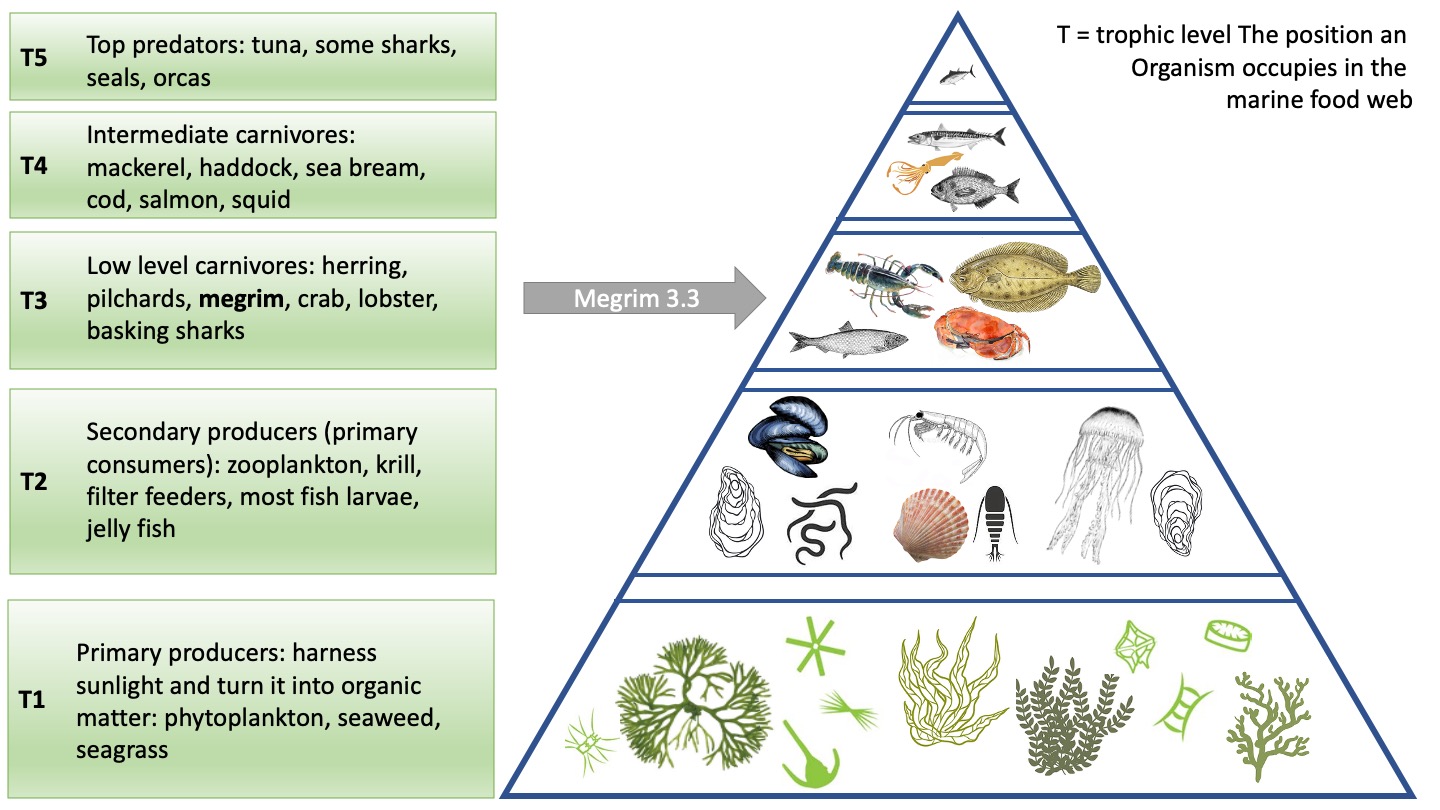Sustainability of Megrim fishery in Ireland
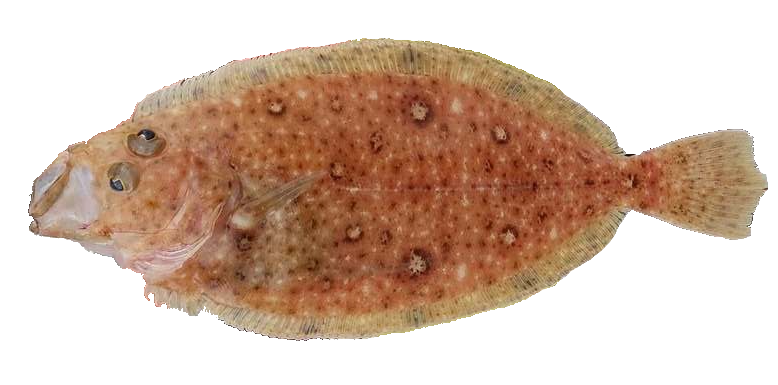
- Sustainability rating: 2
- Avoid spawning season: January - April
- Main Irish fishing method: Bottom otter trawl
Megrim is a fish of economic importance in Irish waters and is targeted by commercial vessels, with Spanish and French vessels taking the majority of megrim landings. Around 40% of megrim are currently caught by Irish boats, with most of it exported to continental Europe (mainly Spain and Italy). Even though it is caught by deep-sea bottom and otter trawls, a fishing method considered unsustainable, it is seen as a responsible choice as stocks are stable and healthy.
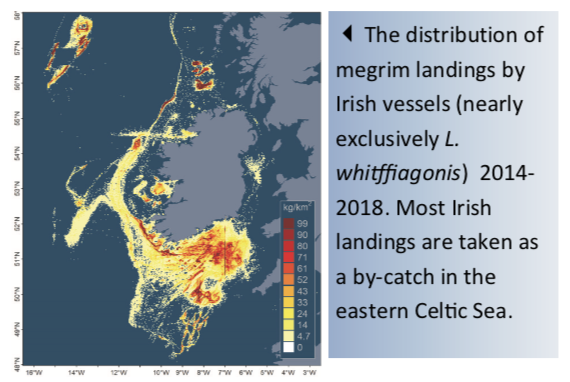
However, in some fisheries where more traditional table fish such as cod, haddock and monkfish are targeted there is a major problem with vessels catching large amounts of megrim as by-catch. Despite this megrim are classed as a species of ‘Least Concern’ by the International Union for the Conservation of Nature, and the Marine Conservation Society as well as ICES assessed the stock in 2019 as healthy and being harvested sustainably (MI fish stock book, 2019).

Megrim is a good example to illustrate the pickle we’re in when encouraged to eat more seafood. It lives on the seabed partly buried in mud or silt and is a very attractive fish in regard to price, availability and maybe most importantly sustainability. ICES (the international council of the exploration of the sea) records reflect a healthy stock and recruitment for our waters which means it is in great shape when it comes to sustainability. But the only way to catch megrim is by beam or bottom trawl. So, to catch a sustainable species it requires the use of an unsustainable method. And this is not just true for megrim, but for much of our sustainable seafood. Trawling is not a sustainable method to catch seafood, but the irony of this much criticised method is that, despite the destruction it wreaks on the sea floor and on many (popular) stocks, it is able to bring to the surface some of the species that marine conservation groups are telling us to eat more of.
Luckily, the knowledge exists to make beam and bottom trawling less damaging and more selective and the methods have improved tremendously over the last decade. Some beams incorporate ‘release panels’ in the floor of the net to enable crustaceans and other seafloor inhabitants to fall out again. Most bottom trawls nowadays have large rubber wheels attached to the bottom so that it lifts the net off the seabed resulting in less damage and also reduced fuel consumption by the trawling boat. Organisations such as BIM (Bord Iascaigh Mhara) frequently carry out comparative studies on different trawling methods always aimed to reduce both by-catch and damage to the seafloor while effectively catching target species.
The below images show an otter trawl and how seafloor damage and by-catch can be reduced with highly developed fishing gear.
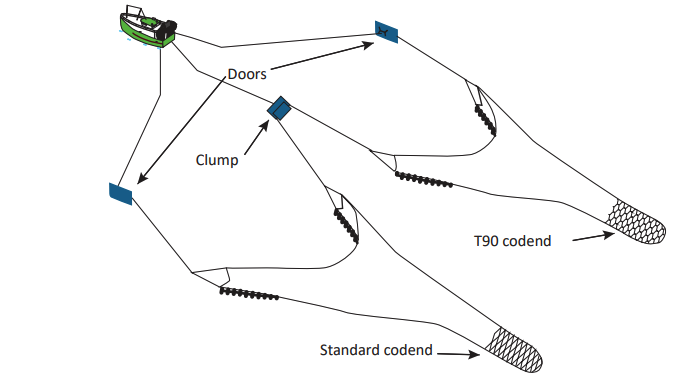 If you can find otter-trawled megrim, it is a better choice than the beam trawled one, because the method penetrates the seafloor less deep and therefore reduces the damage.
If you can find otter-trawled megrim, it is a better choice than the beam trawled one, because the method penetrates the seafloor less deep and therefore reduces the damage.
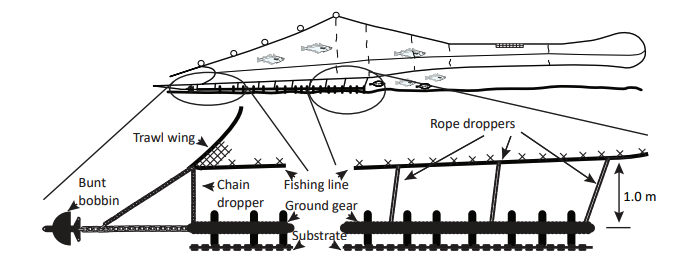
Megrim in the Marine Food Pyramid
